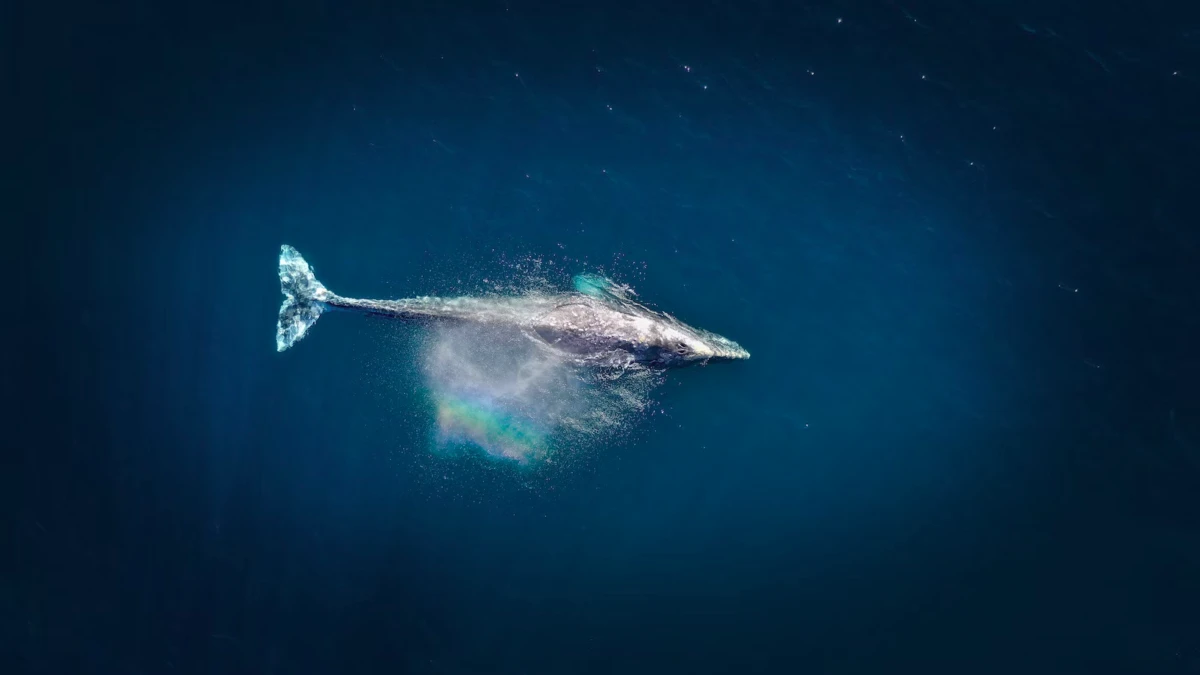Exploring The Differences Between The Blue Whale And The Fin Whale
Both Whales are two of the largest cetaceans in the world. Despite their apparent physical resemblance, these two whale species have notable distinctions in various aspects such as size, diet, habitat, and behavior.
These two species are highly intelligent and social creatures that have captivated researchers and wildlife enthusiasts alike. Let’s look at the differences between these two majestic cetaceans to understand better their traits and how they live side-by-side in our oceans.
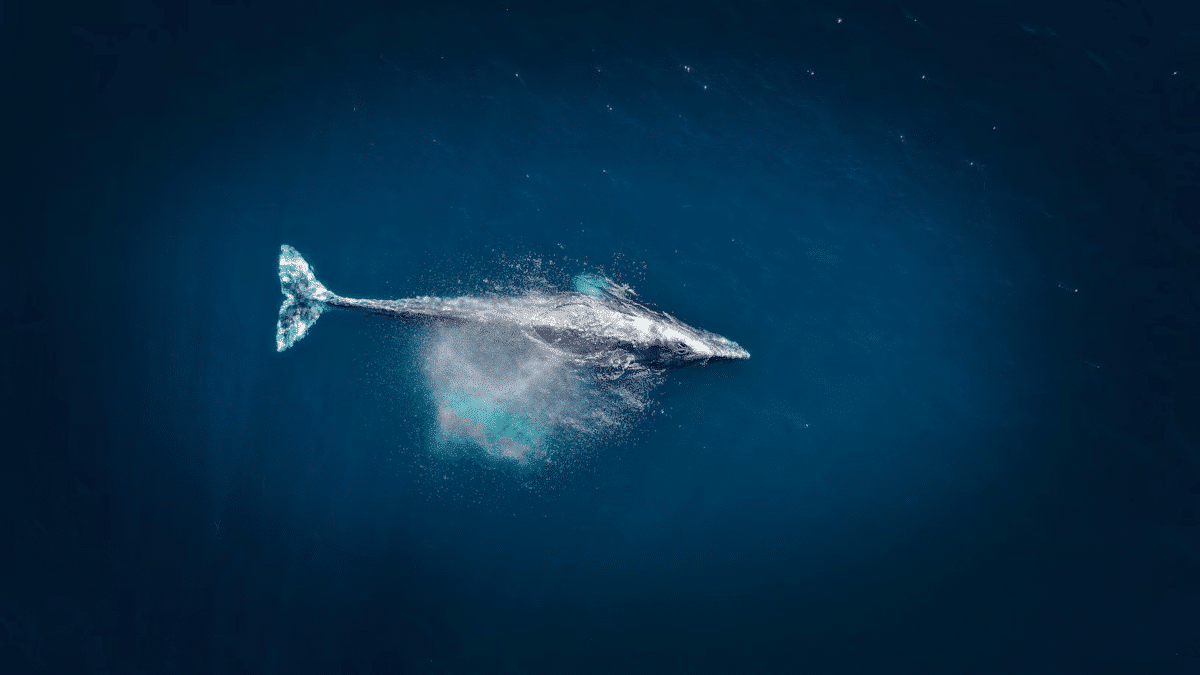
Want to swim ahead? Click below
Comparison Table
| Features | Blue Whale | Fin Whale |
|---|---|---|
| Size (Length) | 25-30m | 18-26m |
| Weight | 200 tons | Up to 80 tons |
| Diet | Krill, small schooling fish, herring, anchovies, and other small organisms | Tropical and subtropical regions around continental shelves and slopes |
| Habitat | Temperate and colder waters worldwide | Solitary animals are relatively silent compared to Fin Whales: solid social bonds, and lifelong relationships with family members and pods. |
| Migration Patterns | Highly migratory, it travels across all the world’s oceans for food and mates. Summer in higher latitudes and winter in lower margins | Filter feeders take in water and strain out tiny organisms such as krill and small fish through baleen plates. |
| Behavior | Solitary animals are relatively silent compared to Fin Whales: solid social bonds and lifelong relationships with family members and pods. | More vocal and boisterous than Blue Whales, known to travel in pairs or small groups, and also display social behaviors such as gathering to feed, migrate, and reproduce. |
| Feeding Habits | Active hunters, echolocation being its preferred hunting technique. | Found primarily along Antarctica and South America, it travels northward in summer and returns south in winter. |
Overview Of Blue Whale And Fin Whale
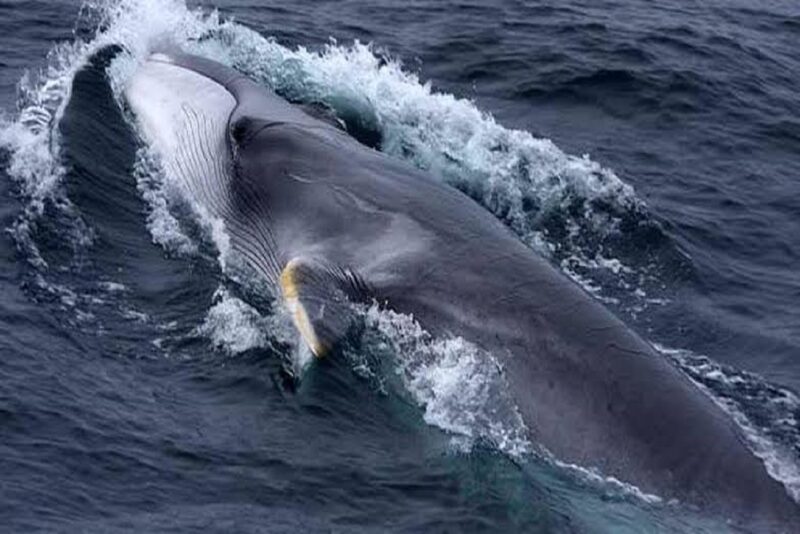
Blue Whales and Fin Whales are the world’s largest and most impressive cetaceans. With sizes that can reach lengths of up to 30 meters (98 feet) for a Blue Whale and approximately 24 meters (79 feet) for a Fin Whale, these two species have captured the hearts of marine biologists and wildlife enthusiasts alike.
The differences between them extend beyond size, however. While both species inhabit oceans worldwide, they prefer different habitats; Blue Whales generally prefer temperate and colder waters, while Fin Whales are more common in tropical and subtropical regions. Their diets also vary significantly; Blue Whales feed on krill, small schooling fish, herring, anchovies, and other small organisms, while Fin Whales feed primarily on squid.
In addition to their physical differences, these two whales have distinct behaviors that set them apart. Blue Whales are solitary animals that remain relatively silent compared to the vocalizations made by the more boisterous Fin Whales. They also demonstrate remarkable intelligence – using their highly evolved brains to navigate through complex networks of sound waves created by their environment to locate prey or communicate with other species members.
As fascinating as these giants may be, it is important to remember that both species face significant threats due to human activities such as pollution, climate change, and overfishing. But by learning more about our ocean’s inhabitants, we can ensure they can continue thriving.
Comparison Of Size
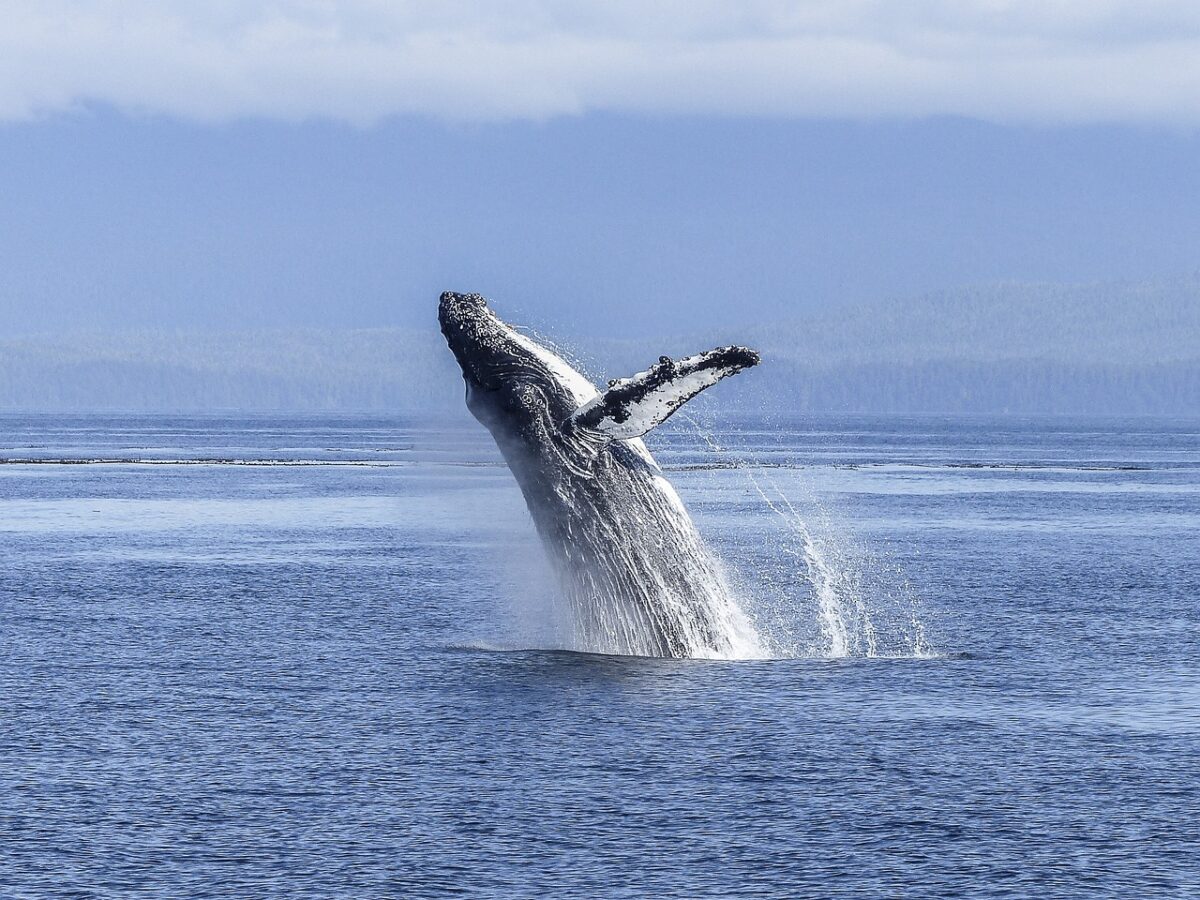
- Blue Whale
The blue whale is widely recognized as the largest known animal on our planet, surpassing all other cetaceans in size that have ever been documented. Adults typically measure 25-30 meters long and weigh 200 tons. In blue whales, females are generally larger than males and can grow up to 33 meters. It makes the blue whale nearly three times larger than an average fin whale.
- Fin Whale
Fin whales are smaller than their blue whale cousins but still impressive, measuring 18-26m in length and weighing up to 80 tons at maturity. They have a distinctive streamlined shape that is narrower at the head and gradually widens towards the tail fluke. Despite their large size, they are incredibly agile when swimming and can reach up to 30 knots (55 km/h).
Comparison Of Diet
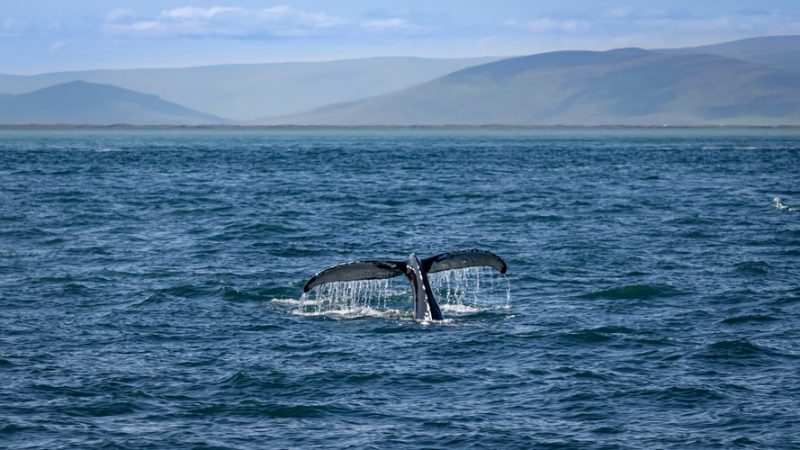
- Blue Whale
The blue whale is a filter feeder, meaning it feeds by taking in water and straining out the small organisms such as krill and small fish through its baleen plates. The blue whale is known to be near the ocean’s surface but can dive to immense depths to forage for its prey. This massive creature can consume up to 4 tons of small organisms, such as krill, daily.
- Fin Whale
On the other hand, the fin whale is an active hunter and has a more varied diet than the blue whale. This species is known to feed on multiple types of fish, squid, octopus, and crustaceans, with echolocation being its preferred hunting technique. Generally speaking, it consumes about 2 tons of prey daily and prefers to forage in deep waters far from shorelines.
Comparison Of Habitat
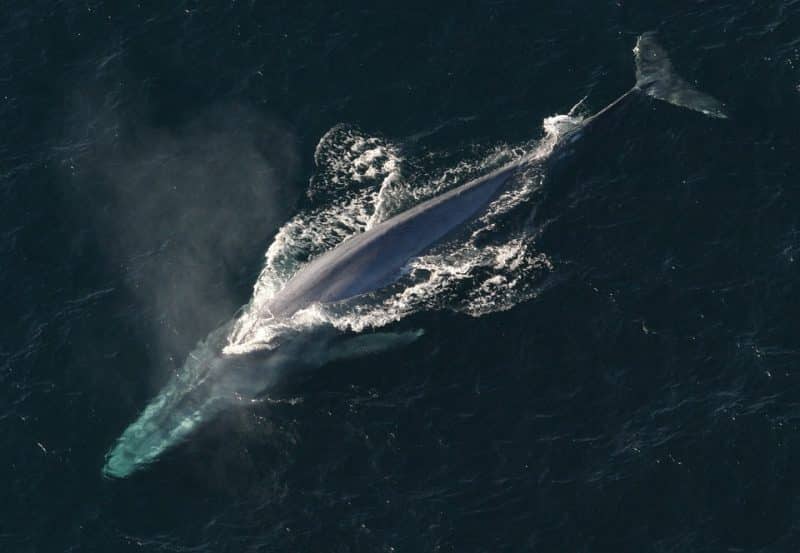
- Blue Whale
The Blue Whale is a highly migratory species, traveling across all the world’s oceans in search of food and mates. They prefer temperate and polar waters, where their primary prey – krill and small schooling fish – are plentiful. As they migrate through various ocean regions, they may feed on zooplankton when krill is scarce. Blue Whales typically spend summers in higher latitudes, such as the north Pacific Ocean off the coast of Alaska or northeastern Russia, and return to lower margins during winter, such as the Gulf of California or southern Australia.
- Fin Whale
Fin Whales are generally found around continental shelves and slopes, particularly in the southern hemisphere along Antarctica and South America. During summer, they may travel northward in search of food before returning south during winter months to breed in large numbers near tropical waters.
Like Blue Whales, Fin Whales primarily eat krill and schooling fish but will feed on squid and planktonic crustaceans when available. Although they are known as one of the fastest whales in the world (reaching speeds up to 30 km/h), they prefer swimming at a leisurely pace rather than bursts of speed like other cetaceans such as Orcas or Pilot Whales.
Behavior Of A Blue Whale: Social Behaviors
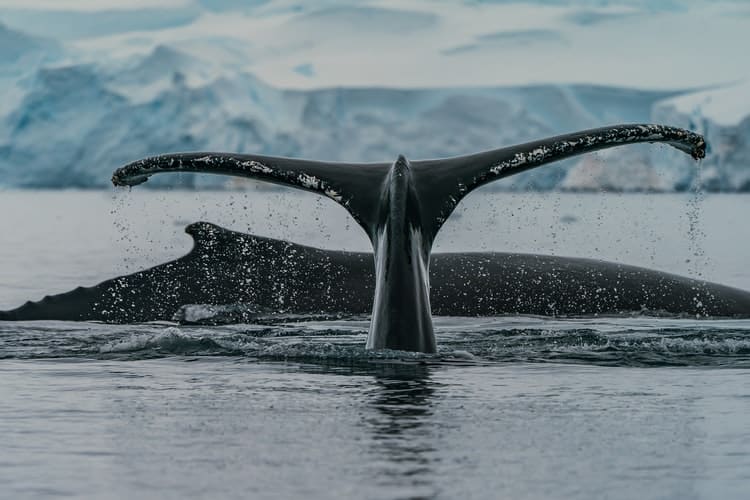
Blue Whales are typically found in pairs or small groups and often gather to feed, migrate and reproduce. They use a variety of sounds, such as clicks and moans, to communicate with each other. They also display strong social bonds, often forming lifelong relationships with family members and pods.
Feeding Habits: Blue Whales primarily feed on krill, plankton, copepods, squid, and small fish. To capture prey, they open their mouths wide underwater and then wholly engulf large amounts of water containing food before filtering out the water through the baleen plates in their mouth.
Learn more about What Do Blue Whales Eat? | Diet, Eating Habits and Consumption.
Migratory Patterns: Blue Whales undergo long-distance migrations every year to reach optimal feeding grounds during the summer months. During winter, they move towards warmer waters near the equator for breeding and calving purposes. Researchers have studied their migratory patterns extensively using tracking devices attached to whales for observation.
Behavior Of A Fin Whale

Fin Whales are highly social animals, often swimming in large groups of up to 20 individuals. They use a variety of vocalizations to communicate with each other, including low-frequency moans, buzzes, and whistles. Fin Whales are also known for their playful behavior, such as breaching or jumping out of the water.
Social Behaviors: Fin Whales have complex social behaviors and interactions that help them survive in their environment. For example, mothers and calves often form strong bonds and stay together for over a year. During this time, the calf will learn survival skills from its mother, such as hunting for food, evading predators, and migrating long distances. Fin Whales can also live in pods or schools formed by several individuals working cooperatively to find food.
Feeding Habits: Fin Whales mainly eat krill, small fish, squid, crustaceans, and plankton. To capture larger prey items such as fish or squid, they use suction feeding, rapidly expanding their throat pouch, allowing them to take in large amounts of water with prey items inside. They then quickly expel the water while keeping the prey inside their mouths using baleen plates which act like a sieve in filtering out smaller prey items.
Migratory Patterns: Fin whales are one of the few marine mammals that migrate annually between summer and winter habitats due to seasonal changes in ocean temperatures or the availability of food sources. In summer, they can be found near the poles, while during winter, they migrate further south, where the waters are warmer. Some fin whales have even made trans-Atlantic journeys from Europe to North America!
Wrapping Up with Blue Whale vs. Finn Whale
In conclusion, while the Blue Whale and the Fin Whale have many similarities, they also have significant differences. Each species has unique characteristics that set it apart, from size to diet to behavior. Though both are highly intelligent and social animals that can captivate us with their beauty and grace even from a distance, understanding their traits can help us appreciate them for who they truly are as individuals.
Thanks for following along with me! I hope you enjoyed reading about the pros and cons of two very different ocean animals. Next up is Gorilla vs. Cobra and Puma & German Shepherd.
Join our Forum for free today!

- Big Cats Love Mouthing Affection - July 22, 2024
- Kind Elephant Merciful To Lion Cubs - July 22, 2024
- Beachgoers Save Massive Shark Stranded In Florida - July 22, 2024

